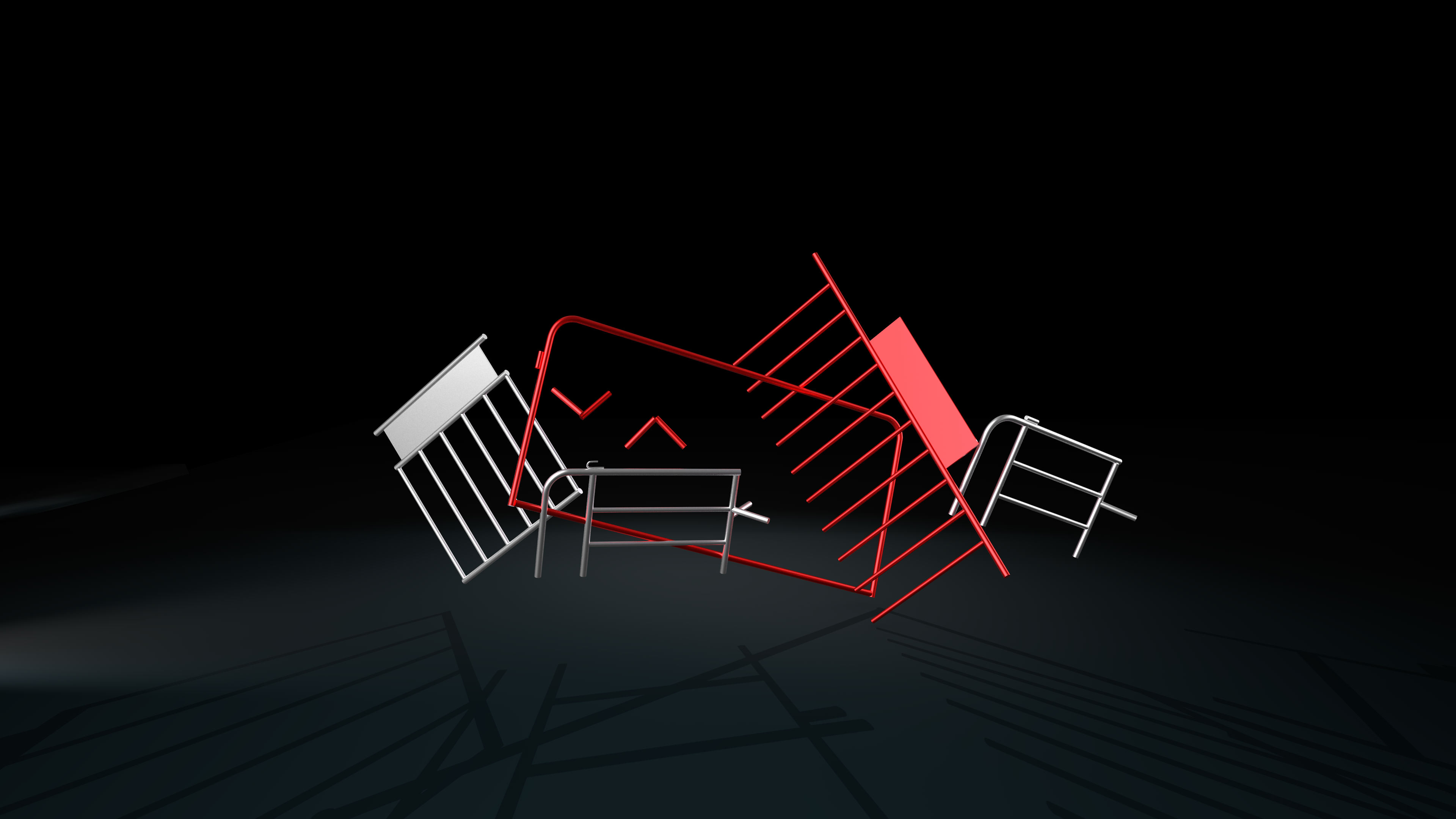Twilight zones - Tosefet Shabbat
An exhibition of Nira Pereg
Braverman Gallery, Tel Aviv — 4 juillet-15 octobre 2021

This third solo exhibition of Nira Pereg's work at the gallery was initially thought as scoring the opportunity to celebrate Sabbath, the mythical 2008 video that established the artist's reputation. Nira Pereg documented then the installation of temporary barriers to prohibit all vehicular traffic on the eve of Shabbat in the ultra-Orthodox Jewish neighborhood in Jerusalem, establishing a boundary between the sacred and the profane. In recent years, as a real obsession, the artist has taken the habit of returning to the scene of the "crime" to capture the changes on the spot. De facto these back and forth movements have become a sequel and is supposed to take stock every 10 years and reassess the changes. In minor appearances, or the ten years’ anniversary version it looks that the barriers, paradoxically, have become rickety and the attitude of the observant casual, but on the other hand the authorities have institutionalized the separation and the police in turn relays the very principle of prohibition of mechanized traffic. The ban has become eminently political, meaning that there is no longer any de facto separation between the religious and the secular. Retelling a story is always a new story, the video diptych shown, titled Theos & Krateo* juxtapose two intersections that are being closed in anticipation of the Sabbath. A mere 1.5 km from each other, both locations differ in that the closures are performed by the two prevailing jurisdictions. In THEOS, the barricade is erected by civilian Orthodox Jews, while in KRATEO the barricading is executed by police officers in uniforms, which represents the state rule.
This key work becomes in the same time the occasion of a series of variations around the advanced notion of sculpture to the widened sense of the term as a form of resistance by reaffirming itself in the most diverse materials which go of the neon, while passing by all the ranges of the materials, mineral, plastic, metal, maintaining at the same time links of fertile crossing with the video-sculpture, the installation, the performance, the ready-made hybrid objects. The title Tosefet Shabbat in Hebrew (meaning “Sabbath Supplement”) is literally the idea of an extension of the video’s title but it also acts as a diversion to the halachic concept of "adding the profane to the holy" which means that the celebration of Shabbat lasts a little longer than the prescribed time, while the meaning of the title departs from the literal and means that it happens after the time is up, indicating disarray or urgency. The twilight zone, a free translation into English, can also characterize anarea where two different ways of life or states of existence meet.
The leitmotif of the exhibition is the barrier, an increasingly common accessory, which is now blending into popular culture. Crowd control barriers act as a physical and psychological barrier, to demarcate "no access" zones. In the meantime, the pandemic arrived and we all found ourselves locked up. In the emptied public space, remained only the artifacts that serve to prevent us from moving freely. It seemed the more our public space was emptied of its inhabitants, the more artifacts were placed there to block us, like an empty stage, full of metal barriers, large stones, stop signs, some no longer in use, and red and white warning ribbons. These props, have become the new ornaments of our cities, an inflation of signs. Everyone has around him a symbolic barrier which keeps others at a distance, and which protects his integrity, his privacy. Humanity has been built by establishing thresholds. The idea is to refuse the importunate. There are the limits of the body, which we have no right to override without consent. There is the public and the private, the sacred and the profane. Nowadays, we set up barriers, we saturate the public space with removable metal barriers and in return we neglect all symbolic thresholds. The artist says in her own way that we cannot live with this generalized, encouraged, instituted dissociation.
Curated by Ami Barak
*Etymology of the word theocracy originating from ancient Greek θεός (theos), meaning "god", and κρατέω (krateo), meaning "to rule"


Nira Pereg, (b 1969, Tel Aviv) spent the 1990s in New York, where she received her B.F.A from Cooper Union. On her return to Israel, she graduated from the Bezalel M.F.A studio program in Jerusalem, and has been exhibiting and teaching In Israel and internationally ever since.
Pereg’s multichannel video installations challenge the status quo of any territory she immerses herself in. She anchors her work in documentary practice, developing her own “play of resolutions”. She often employs multi channel presentations which both estrange the events from their origin, and “reenact” them within the exhibition space. This particular aesthetic intervention heightens a constant discomfort with “the way things are”. The merger of spirit and matter, as it is coexist in public spaces of religious/political/military importance, serves as a platform for Pereg’s interest and involvement in the social manifestations of power structures which influence our lives.